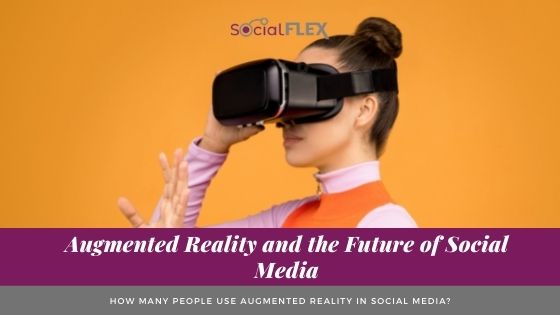Augmented reality has become increasingly common in social media. You may have seen it before on mobile devices in the form of filters, different lenses, and special effects. Augmented reality was first introduced to social media by Snapchat, but now Instagram, Facebook, TikTok, and Pinterest all have their own augmented reality features added to their platforms.
There are many augmented reality applications for users to make their content and interactions with each other more fun. But why is augmented reality important for companies? And what are the marketing applications?
What Is Augmented Reality?
Augmented reality, or AR, is similar to virtual reality in that it provides an interactive experience to users. However, instead of completely immersing a user like virtual reality (VR), AR enhances what is already there. For example, on FaceTime, people can use a dog filter that adds a dog nose and dog ears to their existing image. AR makes social media more interactive by letting users enhance the real world around them as they choose.
What AR Features Do Social Media Platforms Use?
Filters are the most common augmented reality features used by social media platforms. Filters are what let users add dog faces or sparkles to their photos and other content. Filters aren’t just for people. They can be added to objects, animals, parts of the body, or even voices.
How Many People Use Augmented Reality in Social Media?
Social media is a popular means of marketing for businesses because of the millions of people who use it every day. Augmented reality features are used at least monthly by about 20% of those people, a number that is still in the millions. While Snapchat is still the primary platform for AR, it’s increasing on other platforms as well.
What Marketing Applications Are Available with AR?
The COVID-19 pandemic has actually increased the popularity of augmented reality. With lockdowns preventing users from shopping in person, AR allowed them to try on products virtually instead. Although shopping online was common before the pandemic, some people were still hesitant to buy clothes or shoes online without knowing how they looked first. AR has solved that problem.
Additionally, companies are creating branded filters that can be used with social media platforms. While this doesn’t have a direct impact on selling like a filter to try on products does, it does help promote the company’s brand. For example, there’s a Taco Bell filter that people can use to change their faces into tacos that also has the company logo in the corner. Branded filters can be an excellent way to get users engaged and interacting with your brand.
Is Augmented Reality the Future of Social Media?
Virtual reality and augmented reality used to be something out of science fiction, but now they’re here, a part of our everyday lives. Virtual reality is used for everything from video games to training med students in medical procedures. Augmented reality is becoming a fixture of our communications, as it’s a major part of texting, video chat, and social media. Both VR and AR usage is likely to only increase as the technology improves and it becomes more ubiquitous. AR may be the future of social media, but at the moment, social media is also a major part of the future of AR.

